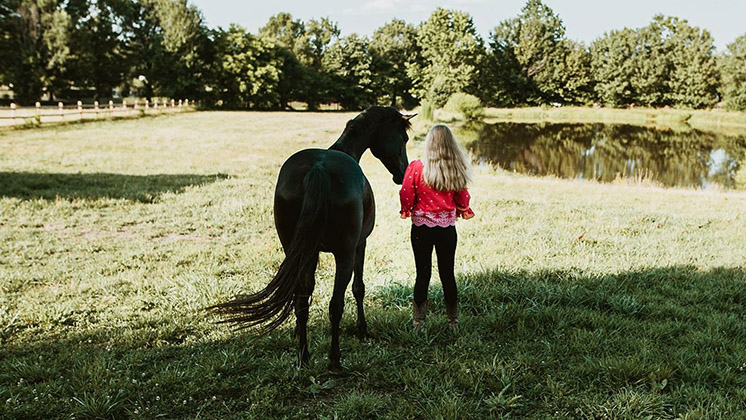When Therapy Horses Pass On: How Practitioners Cope and Grow

In equine-assisted services (EAS), horses aren't just animals—they're trusted partners in healing. So what happens when one of these beloved equines dies? How do practitioners, clients, and entire programs manage the emotional and practical aftermath?
A new study sheds light on this rarely-discussed but deeply felt topic, exploring the grief and resilience of EAS providers after the death of a therapy horse.
Why This Matters
While there's plenty of research on grief following the loss of pets, less attention has been given to the unique grief experienced by people working in equine-assisted services programs. These horses often touch the lives of dozens—sometimes hundreds—of people. When they pass away, it's not just a personal loss. It's a collective one.
How Practitioners Build Resilience
Using the Communication Theory of Resilience, the study identifies five ways that practitioners cope with this kind of loss:
- Crafting Normalcy
Practitioners honored their horses’ lives and legacies by sharing stories, holding ceremonies, or simply continuing rituals that acknowledged the horse's role in the community. This storytelling helped them and others adjust to a “new normal.”
- Balancing Grief with Action
While grieving, many practitioners also had to remain “the professional,” juggling logistics and supporting others. They often described being “stoic,” even while feeling deep personal sorrow.
- Affirming Identity
Practitioners reinforced their identities as caregivers, leaders, and responsible stewards of their horses’ wellbeing. Even difficult decisions, like euthanasia, were reframed as acts of compassion.
- Leaning on Support Networks
Grief was shared. Whether through texts, memorials, or face-to-face conversations, practitioners turned to clients, volunteers, and staff to both give and receive support.
- Reframing the Loss
Most deaths in the study were euthanasia-related. Practitioners often reframed these decisions as "doing the right thing," helping them come to terms with the emotional weight of their choices.
Practical Tips for EAS Organizations
The study suggests that grief protocols and training can help practitioners and programs better prepare for and navigate equine loss. For instance:
- Designating memorial spaces or events
- Developing communication plans for clients and staff
- Encouraging shared storytelling and reflection
Final Thoughts
The death of an equine can leave a profound void. But as this study reveals, it also opens up space for connection, care, and resilience. By openly acknowledging grief and leaning on community, EAS practitioners not only honor their equine partners but also strengthen their programs for the future.
For those working in equine-assisted services—or anyone who has experienced the loss of a beloved animal—this research is a powerful reminder: grief is real, but so is the potential for growth.
Read the Research Paper
This article was based on the research of Dr. Leanne Nieforth and the HAPI lab. Read the research:
Suggested Articles

The Healing Power of Assistance Dogs for Veterans with PTSD
Explore how psychiatric assistance dogs help veterans with PTSD, reducing symptoms, improving mental health, and fostering social connections, as highlighted in a comprehensive review of 41 studies.
Read more
The Growing Global Landscape of Human-Animal Interaction Centers
Explore the rapid growth of human-animal interaction (HAI) research from 2016 to 2021, focusing on global collaboration, educational integration, and advancing the well-being of humans and animals alike.
Read more
How Horses Help Adolescents Build Resilience
Discover the transformative power of Equine Assisted Psychotherapy (EAP), blending traditional therapy with horse-guided healing to help adolescents overcome trauma, build resilience, and foster emotional growth.
Read more
